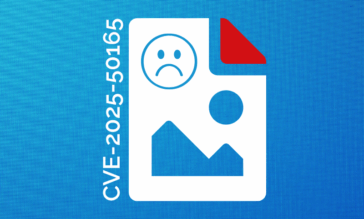What is DSPM? Understanding Data Security Posture Management

Data is an organization’s most valuable asset, but securing sensitive information has become more challenging as businesses expand their digital footprints. Cyber threats are evolving, cloud adoption is accelerating, and regulatory requirements are tightening, making traditional security approaches increasingly ineffective. Organizations are no longer just defending a centralized network—they must now protect data in motion, data at rest, and data spread across multi-cloud environments, SaaS applications, and third-party integrations.
With ransomware attacks, insider threats, and data leaks becoming more frequent, companies need more than just firewalls and access controls to keep their data safe. They need visibility, control, and proactive security measures to ensure sensitive data isn’t exposed due to misconfigurations, shadow IT, or unauthorized access.
This is where Data Security Posture Management (DSPM) comes in.
What is DSPM?
As organizations continue to expand their digital operations, the ability to see, understand, and protect sensitive data has become a fundamental challenge. DSPM is a modern security approach that continuously identifies, monitors, and secures sensitive data across cloud, hybrid, and multi-cloud environments. Rather than focusing on network perimeters or endpoint defenses, DSPM focuses on the data itself, ensuring that organizations have complete visibility into where their data resides, who has access to it, and whether it is properly secured.
Unlike traditional security tools such as Data Loss Prevention (DLP) and Security Information and Event Management (SIEM), DSPM is designed for the dynamic nature of today’s cloud-driven environments. DLP, for example, relies on predefined rules to block or flag sensitive data movement, often leading to false positives or workflow disruptions. On the other hand, SIEM solutions aggregate logs from various security tools to detect threats—but they don’t inherently provide a deep understanding of where sensitive data is located or how it’s being used.
DSPM bridges these gaps by offering real-time visibility into data flows, risk assessment capabilities, and automated policy enforcement. It gives security teams a clear picture of how data moves across an organization, where potential exposures exist, and what actions must be taken to mitigate risk.
Why DSPM Is Helpful
One of the biggest challenges businesses face is cloud complexity. With the rise of multi-cloud environments and an increasing reliance on third-party services, organizations now have data stored across multiple locations—often outside their direct control. DSPM helps solve this by mapping out data flows in real-time, identifying sensitive information no matter where it resides, and ensuring security teams have visibility into potential vulnerabilities.
Beyond cloud complexity, companies struggle with shadow data—unstructured, forgotten, or orphaned data outside traditional security monitoring. This could be old customer records stored in an abandoned cloud drive, sensitive documents left in shared folders, or API-generated data that was never properly classified. Since attackers actively seek out overlooked data repositories, shadow data represents a massive security blind spot. DSPM combats this issue by continuously scanning and classifying data, flagging exposures, and ensuring nothing slips through the cracks.
For industries handling personally identifiable information (PII), financial records, or healthcare data, compliance with regulations like GDPR, HIPAA, and PCI-DSS is a non-negotiable requirement. However, staying compliant is not just about securing databases—it’s about ensuring all sensitive data, whether structured or unstructured, is properly managed. DSPM automates compliance monitoring, helping businesses enforce security policies, detect violations, and reduce the risk of regulatory penalties.
Finally, DSPM monitors access patterns, uncovers misconfigurations, and enforces data security policies, helping to prevent insider threats, accidental data leaks, and exposure from insecure third-party integrations.
How DSPM Works: Core Features and Capabilities
Unlike traditional tools, DSPM scans across structured, unstructured, cloud, and third-party environments to identify PII, financial records, and other critical data—ensuring full visibility. Once data is discovered, continuous monitoring and risk analysis track how it moves, flagging misconfigurations, excessive access, and policy violations before they become security threats. By enforcing least privilege access and automated policy enforcement, DSPM reduces the risk of unauthorized access and insider threats.
DSPM also integrates with SIEM, SOAR, and IAM solutions, enhancing security posture across cloud and on-prem environments.
The Limitations of DSPM: Where Additional Security is Needed
While DSPM provides valuable visibility into where sensitive data resides and how it’s accessed, visibility alone isn’t enough. Identifying risks is critical, but organizations remain vulnerable to data breaches, insider threats, and malware attacks without real-time preventative measures.
One major limitation of DSPM is the gap between risk identification and threat prevention. While it flags misconfigurations, excessive permissions, and policy violations, it often doesn’t stop an attack in real-time. If sensitive data is already exposed, simply knowing about it doesn’t prevent an attacker from exploiting it.
Another challenge is unstructured data security. Many DSPM tools are optimized for structured environments like databases and cloud storage, but files, documents, and email content often slip through the cracks. Unstructured data moves unpredictably across collaboration tools, third-party applications, and employee endpoints, making it a prime target for cybercriminals.
DSPM is a powerful risk assessment tool, but organizations still need proactive security measures to neutralize threats before they spread. Without real-time protection, organizations are left reacting to threats rather than preventing them.
Enhancing DSPM with Proactive Data Security, Like Votiro
Organizations need more than just risk awareness—they need real-time, automated security that prevents threats and data leaks before they can cause damage. This is where Votiro comes in, complementing DSPM with a proactive approach to masking unstructured data and neutralizing threats before they can reach endpoints.
Votiro’s Zero Trust Data Detection & Response (DDR) platform is two security solutions in one. On one hand, Votiro fills the security gaps DSPM leaves behind with advanced CDR, which ensures that files, documents, and email attachments are clean and threat-free before they enter an organization’s network. On the other hand, but also simultaneously, Votiro’s active data masking ensures that sensitive information stays in approved hands or is obfuscated accordingly—without disrupting business workflows.
By integrating Votiro DDR with DSPM, users get data visibility and real-time protection, enabling IT teams to see where sensitive data resides while ensuring it remains secure at all times. Try a demo today to learn more about how Votiro can enhance the security of your DSPM.
News you can use
Stay up-to-date on the latest industry news and get all the insights you need to navigate the cybersecurity world like a pro. It's as easy as using that form to the right. No catch. Just click, fill, subscribe, and sit back as the information comes to you.
Sign-up Here!
Subscribe to our newsletter for real-time insights about the cybersecurity industry.



